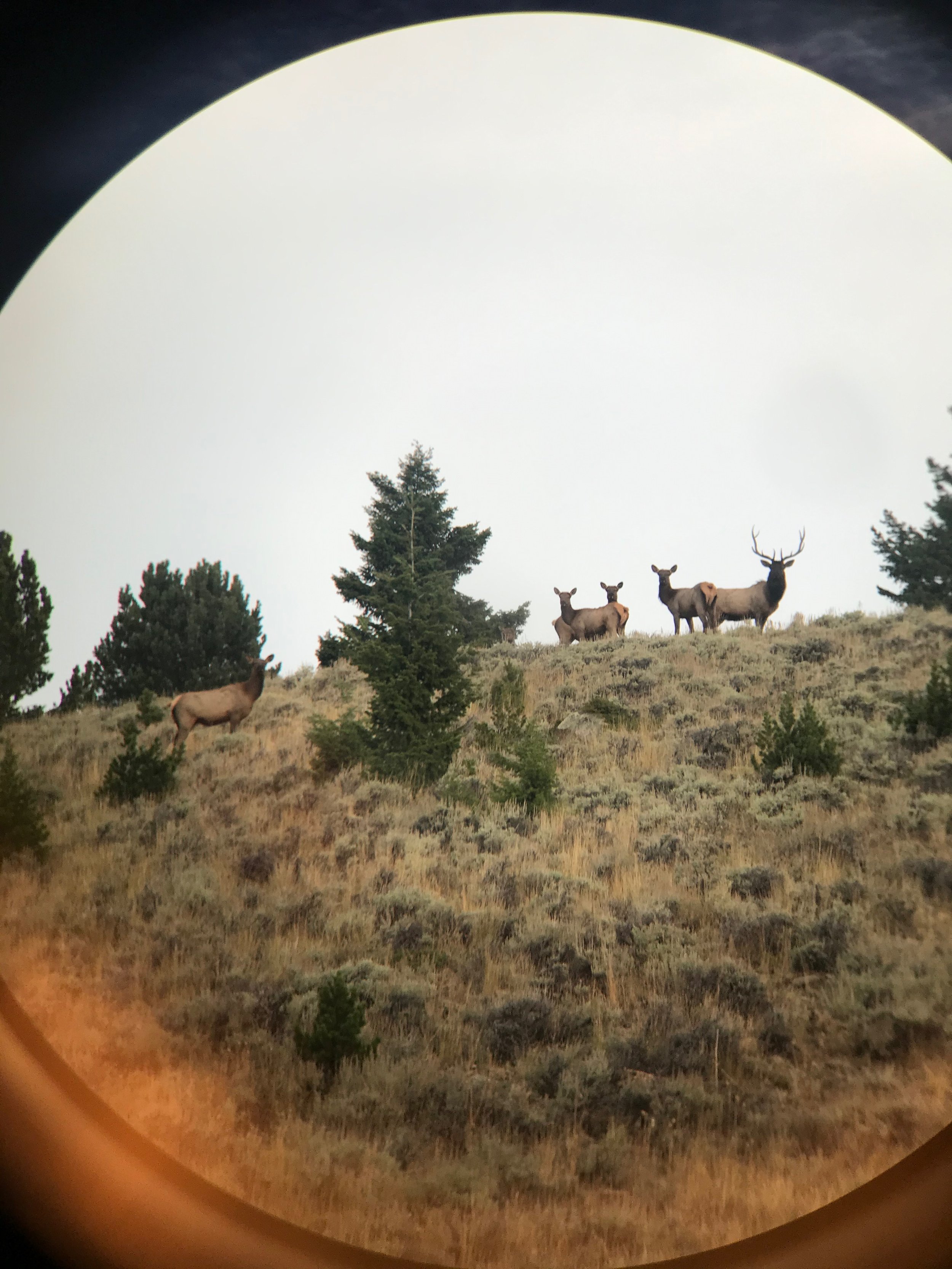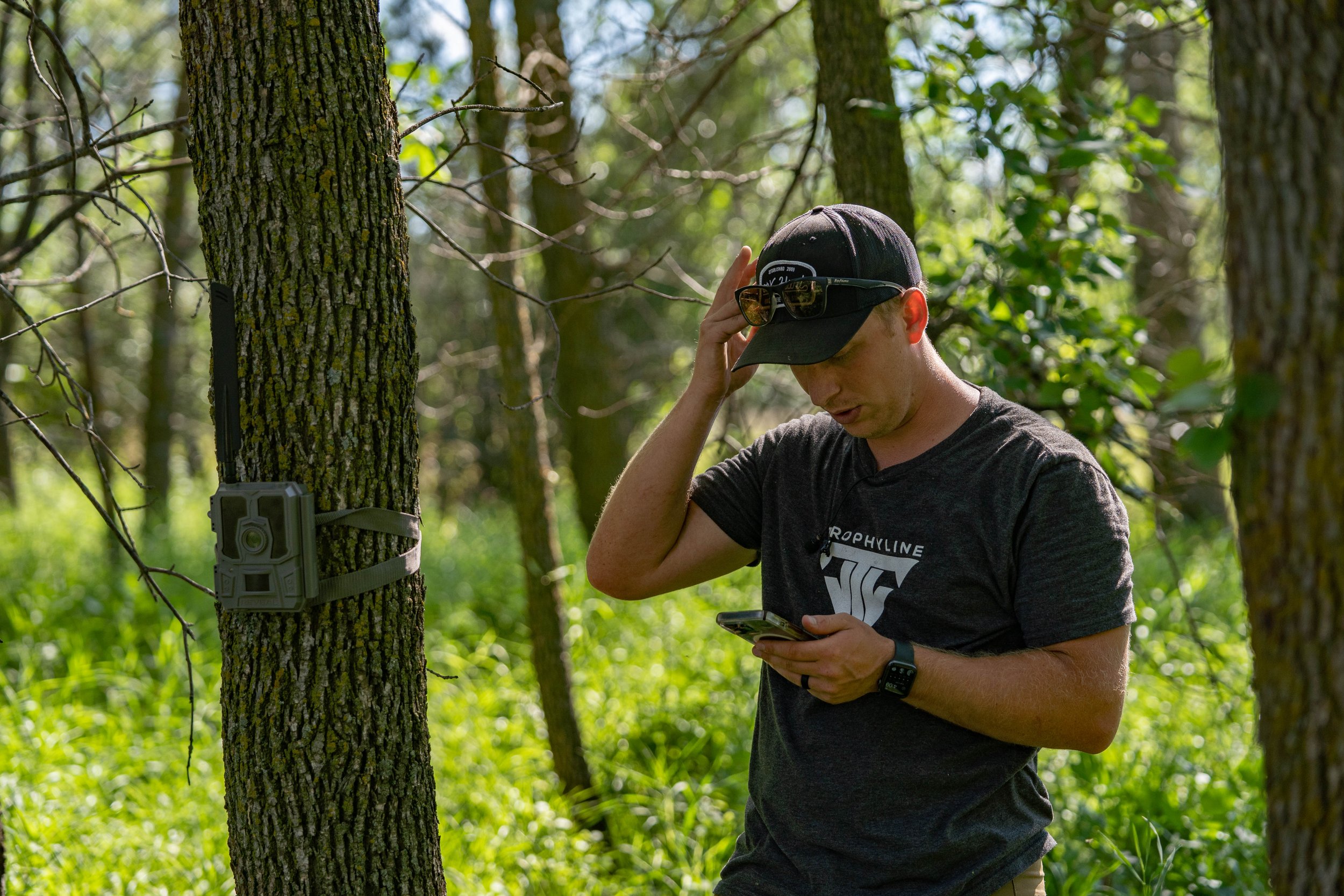By Alex Comstock
Photography can be a powerful thing when done right. The right picture can elicit memories from a hunt, and when you reflect on a picture, it can bring you right back to that moment. A single image can capture and tell a whole story. Recently, I reached out to a couple professional photographers in Steven Drake and Sam Soholt and wanted to get both of their perspectives on all things related to hunting photography. If you wish to improve your photography game at all, their answers to these questions will undoubtedly help you. Enjoy our Q&A with Sam and Steven below!
Q: At the most basic level, if someone wants to be proficient just photographing harvest photos, what is your best advice?
Steven: Personally, I don't shoot traditional trophy photos unless asked. I feel they only add to the misconception of hunting. Jim Shockey once said something along these lines, "When a non-hunter sees a traditional trophy photo, all they see is a human smiling at the death of an animal." What they don't see is the time and effort that went into getting to that moment. Hunting is a process. I think back to my 2011 elk season. I hunted 45 days in Montana before I killed an elk. The kill was 1/45th of the process and to me, a trophy photo alone doesn't give any justice or credibility to the entire hunting pursuit. There's so much more to it!
When I do shoot trophy photos however, I break the traditional mold and shoot images of the hunter reflecting on the hunt, admiring the beauty of the animal. I aim to show respect and admiration for the animal and landscapes in trophy photos. Instead of looking at the camera, I'll ask the hunter to look down at the animal and admire the details, pretending I'm not there. These types of images quickly become favorites of the hunter and when they get shared publicly it sheds a more positive light on hunting to those that do and don't understand it.
Photo courtesy of Steven Drake
Sam: The best advice I could give is to shoot A LOT of photos. Take as many as you think you need to, and then double it. You only get one shot at doing recovery photos so a little extra time trying different angles and shots can make all the difference. Never shoot at a downward angle unless doing an over the shoulder shot. Get low to the ground and don’t be afraid to direct the hunter to try turning the head different or move a leg. Another thing that helps is to clean the animal up a bit. A pile of blood in a photo doesn’t look great. Carry some paper towel and use some water from your bottle to clean everything off. Finally, tuck that tongue in. You spent a whole year in the process of harvesting that animal, the least you can do is take the time to shoot photos you’ll be proud of.
Photo courtesy of Sam Soholt
Q: For someone who is brand new to the idea of photographing their hunts, where do you recommend they start not only for gear, but learning how to work a camera, setting up shots, etc.
Steven: Just start! Shoot photos of the whole process. You don't need a $3,000 camera to effectively and beautifully document hunting. Heck, your smart phone might just be the perfect camera! It fits in your pocket, you can instantly share photos from it and you can attach it to spotting scopes for amazing wildlife footage and pictures with devices like a Phone Skope.
Sam: The best camera is the one that you already own. It could be a smartphone, or it could be a point and shoot, or just an old film camera. I always recommend people shoot as much as possible with what they already own, and then upgrade after they get the basics down. Gear, no matter how expensive it may be, doesn’t take the photo for you. If you don’t practice with what you have, spending a bunch of money won’t make you any better. If you have nothing to shoot with at the moment, it is better to spend the money on good glass and a less expensive body than the other way around. You could spend $4K on a body, but if you use cheap glass to go with it, you’ll never get what you’re looking for.
In regards to learning how to work the camera or set up shots, when I started I probably watched about 100 hours of YouTube videos to learn the camera I had and different photo techniques. All the info is out there, you just need to go find it. A google search is a good place to start.
Q: What do you recommend to people that want to start documenting their hunts and take more than just harvest photos?
Steven: Think holistically. As a hunter what are you doing 365? Document the whole process. The act of hunting puts you in some wild places and creates for interactions with animals that nothing else could. Specifically, I aim to document the travel involved, the emotional highs and lows, the animals, scouting, the time you wake up to the time you get home from a hunt, wild game meat and the delicious meals it creates, etc.
Photo courtesy of Steven Drake
Sam: Think out your shots before you go out on the hunt. Shooting video and more than just harvest photos is about telling a story. Get shots of getting ready, the drive to the parking spot, the climb into the stand, the leaves, your pack hanging from the tree, and so on and so forth. Clearly I’m relating this to whitetail hunting, but you get the idea regardless of what type of hunt you are on. Shoot enough photos or video that when you go back you can relive every part of that experience.
Photo courtesy of Sam Soholt
Q: When it comes to documenting your hunts, do you find yourself staging shots or shooting natural scenes more often? Are there benefits to both types of photography?
Steven: I rarely stage anything. Sometimes I'll ask someone to walk across a certain ridge or let me get ahead of them and shoot images as they come by, and that's while we're actively hunting. I think we all have a discerning eye and can detect a staged photo from an authentic one, so I always go for authenticity. Throwing a European mounted skull in a backpack and walking around for photos is done a lot! 99% of the time it's incredibly easy to call BS which takes away from the credibility of the photographer and hunter. I like to keep it real.
Photo courtesy of Steven Drake
Sam: Because I spend more time behind the camera than in front of it, I try to do about 80% natural shots and 20% set up. If I’m trying to film/photo my own stuff, obviously there has to be a lot more set up. However, that doesn’t mean it still can’t be authentic. If I see a good shot opportunity, I may set it up and walk that line three or four times just to make sure I get something that represents what I wanted to show from the experience.
Photo courtesy of Sam Soholt
Q: What do you find to be the most powerful types of pictures in the hunting world? If someone is going to try and capture something like this, how would they best go about it?
Steven: Images that transcend and reach and connect with a much larger audience. Images showing the crazy, wild places and situations hunting exposes us to does that quite well.
Photo courtesy of Steven Drake
Sam: Harvest photos get the most likes, but that doesn’t mean they are the most powerful. I find that if you can tell a story with a single photo, that can be the most powerful. A photo that shows enough of what is happening that the viewer can put together the rest in their mind. Or better yet, a photo that tells the story but makes the viewer think, or want to think. A unique angle, a wide lens, a long lens pushed all the way in to compress the image. Again, the most important thing is to shoot a lot, and don’t be afraid to shoot “crazy” images. The worst that can happen is it doesn’t look good and you can delete it.
Photo courtesy of Sam Soholt
Q: Do you think there are any big misconceptions that surround hunting photography?
Steven: I won't lie, I'm a lucky son-of-a-gun and have a cool, adventurous profession. But the reality with photography for me anyways, is that I spend twice as much time in front of the computer than in the field shooting. Not a complaint, just reality. One other misconception, or something to keep in mind, is that if you get into photography, you'll want a good computer, editing program like Adobe Lightroom, and a file management system. I have ~500,000 images, all managed throughout Lightroom, with backups of every file.
Sam: I think people feel like a lot of photos in the hunting world are all staged, but a lot of that comes from over-producing an image whether in the shot or in the editing. I like to think that even if a shot is set up, it needs to be done in a way that shows what would actually happen. Don’t over think it.
Q: Someone comes up to you and says, "I want to be a hunting photographer, but I don't think I'm any good. Do you have any advice?" You've only got time to tell them one thing. What would that be?
Steven: Just start! Your phone likely has a great camera in it.
Sam: With that attitude, you’ll never be good. Just get your ass out there and shoot photos until they start turning out the way you want them to.
Q: What's your favorite camera setup? Can you run the reader through why you love this setup so much?
Steven: My favorite is one I know how to use. I recently switched to Sony from Canon after ~5 years with Canon. Generally speaking, the cameras aren't that different but the Sony learning curve was steep! Now after three months and three big photo assignments I'm feeling confident with my Sony cameras. I use a Sony a7riii. Have two of them on me at all times. One has a 16-35mm lens, the other has a 70-200. Two other lenses in my pack are an 85mm and 90mm Macro. Sony's are a tad lighter than Canon, they have better video specs and some models have a silent shutter that literally doesn't make a noise which is an outstanding capability for documenting hunts.
Photo courtesy of Steven Drake
Just having a great camera won't make you a great photographer and I would never suggest anyone get an a7riii as their first. I recommend starting with your smart phone, then if you like it maybe consider a mirrorless like the Sony a6000 series or a point and shoot like Sony's RX100. Lastly, I don't work for or represent Sony in anyway. I just like to promote products and gear that work well.
Sam: 99% of the time, I run a body with 3 lens choices. My current setup is the Canon 5d Mark Iv, a Rokinon 14mm 2.8, Canon 24-105 f/4 L, and a Canon 70-200 f/2.8 L. I love this because it gives me all the ranges of photos that I would want to take, and I don’t have to carry around everything I own.
If you want to see more from Steven or Sam, make sure to give them both a follow on Instagram. You can follow Steven @stevendrakephoto and Sam @samsoholt








































